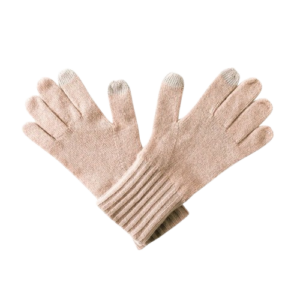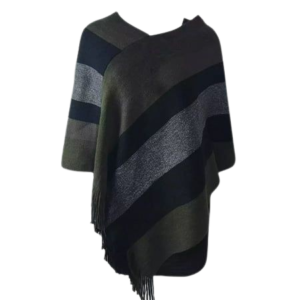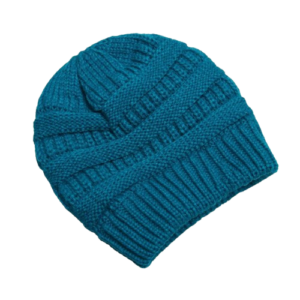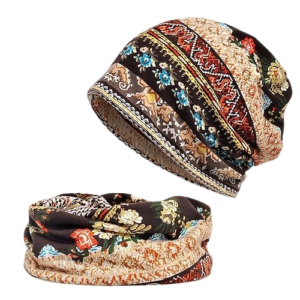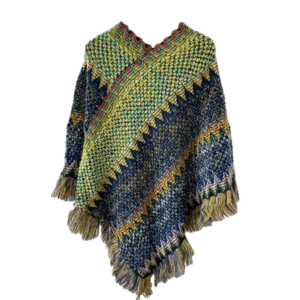Pashmina shawls are synonymous with luxury, elegance, and timeless style. Whether draped over your shoulders on a chilly evening or adding a touch of sophistication to your everyday attire, a high-quality pashmina can be a valuable addition to your wardrobe. However, with the market flooded with various options, distinguishing genuine pashmina from imitations can be challenging. This guide will help you navigate the nuances of selecting the perfect pashmina, ensuring that you invest in a piece that offers both beauty and authenticity.
Understanding Pashmina
Before diving into the purchasing process, it’s essential to understand what pashmina truly is. Pashmina is a type of fine cashmere wool originating from the Changthangi goats found in the high-altitude regions of the Himalayas, particularly in Kashmir, India. Renowned for its exceptional softness, warmth, and lightweight nature, genuine pashmina is a testament to centuries-old craftsmanship and meticulous weaving techniques.
Key Factors To Consider When Choosing A Pashmina
Material Quality
Fiber Source: Authentic pashmina is made from 100% pashm wool derived from Changthangi goats. Ensure that the shawl you’re considering specifies its material composition clearly.
Fiber Fineness: High-quality pashmina fibers are extremely fine, typically less than 15 microns in diameter. This fineness contributes to the shawl’s softness and lightweight feel.
Softness And Warmth: Genuine pashmina should feel exceptionally soft against the skin while providing substantial warmth without being bulky.
Weave and Craftsmanship
Handwoven vs. Machine-Woven: Authentic pashmina is handwoven by skilled artisans using traditional handlooms. Handwoven shawls often exhibit slight irregularities and unique patterns, a hallmark of handcrafted excellence.
Weave Density: A tight, consistent weave indicates high-quality craftsmanship. Loose weaves can lead to a less durable and less aesthetically pleasing shawl.
Patterns And Embroidery: Many pashminas feature intricate hand-embroidered designs such as kani or sozni. Examine the embroidery closely; genuine hand-embroidery will have subtle variations and fine detailing that machine-made patterns lack.
Origin and Certification
Geographical Origin: Authentic pashmina primarily comes from Kashmir, India. Purchasing from reputable brands or sellers who source their shawls directly from Kashmir can help ensure authenticity.
Certifications: Look for certifications or labels that verify the shawl’s authenticity. Some high-end brands provide certificates of authenticity or adhere to standards set by recognized organizations.
Price Considerations
Cost Reflects Quality: Genuine pashmina shawls are an investment and typically come with a higher price tag due to the labor-intensive production process and the rarity of the material. Be wary of exceptionally low prices, as they may indicate inferior quality or imitation products.
Value For Money: Consider the shawl’s craftsmanship, material quality, and brand reputation when evaluating its price. A higher upfront cost often translates to better durability and timeless style.
Size and Weight
Appropriate Dimensions: Pashmina shawls come in various sizes, from small stoles to large wraps. Choose a size that suits your intended use, whether for everyday wear, travel, or special occasions.
Lightweight Feel: One of pashmina’s distinguishing features is its lightweight nature. Ensure that the shawl feels light in your hands while still providing adequate warmth.
Color And Dye Quality
Vibrant and Even Colors: High-quality pashminas use natural or high-grade synthetic dyes that result in rich, vibrant colors. The dye should be evenly distributed without streaks or patches.
Color Fastness: Check that the colors do not fade easily when exposed to light or after washing. This is an indicator of good dye quality and overall fabric durability.
Care And Maintenance
Care Instructions: Genuine pashmina requires delicate care to maintain its softness and integrity. Ensure that you are prepared to follow the recommended care instructions, such as hand washing or dry cleaning.
Durability: While pashmina is warm and soft, it can be delicate. Assess the shawl’s construction and stitching to ensure it can withstand regular use without losing its shape or quality.
Practical Tips For Buying Pashmina
Buy From Reputable Sources:
Purchase pashmina shawls from established retailers, specialty boutiques, or directly from artisans in Kashmir. Reputable sellers are more likely to offer genuine products and provide assurances of quality.

Inspect Before Buying:
Examine the shawl closely for signs of authenticity, such as the fineness of the fibers, the quality of the weave, and the precision of any embroidery. Feel the fabric to assess its softness and lightweight nature.
Ask For Documentation:
Request certificates of authenticity or information about the shawl’s origin and production process. Authentic sellers should be transparent about the product’s background.
Understand The Return Policy:
Ensure that the seller has a fair return or exchange policy in case the shawl does not meet your expectations or if you discover it is not authentic after purchase.
Compare Prices And Quality:
Research different brands and sellers to compare prices and quality. This will help you understand the market range and identify offers that provide the best value for your investment.
Common Myths About Pashmina
Myth 1: Pashmina and Cashmere are the Same: While pashmina is a type of cashmere, not all cashmere is pashmina. Pashmina is made from the finest cashmere wool of the Changthangi goat, making it a subset of the broader cashmere category.
Myth 2: All Pashminas are Handwoven: Genuine pashmina is exclusively handwoven. Machine-made shawls labeled as pashmina are imitations and do not offer the same quality or craftsmanship.
Myth 3: Pashmina is Only for Cold Weather: While pashmina is excellent for warmth, its lightweight nature makes it versatile for various seasons and occasions. It can be styled in multiple ways to suit different climates and fashion needs.
Conclusion
Choosing the perfect pashmina involves understanding the intricacies of the fabric, recognizing the signs of authenticity, and making informed decisions based on quality, craftsmanship, and provenance. A genuine pashmina shawl is not just a fashion accessory; it’s a piece of art that embodies centuries of tradition and meticulous workmanship. By paying attention to the key factors outlined in this guide, you can confidently select a pashmina that offers both luxury and lasting value, enhancing your wardrobe with its timeless elegance and superior comfort.


